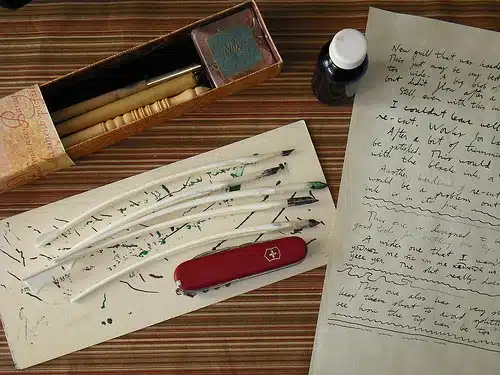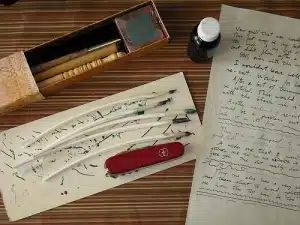The Ultimate Guide to Nonprofit Grant Research and Writing


Full Platform Overview Chat With Us



Full Platform Overview Chat With Us




Zora Neale Huston (1891-1960) was one of the pre-eminent authors of African-American literature during the 20th century. She once observed, “Research is formalized curiosity. It is poking and prying with a purpose.”
I would argue the role of nonprofit research and grant writing professionals is also to be, “poking and prying with a purpose.” To identify the most appropriate donors for your nonprofit projects, to factually demonstrate the need and urgency for funding, and to inspire prospective funders with irrefutable evidence, are each aims of research.
But ARPA: Association of Professional Researchers for Advancement also cautions us:
“In today’s environment, competition is intense for limited philanthropic dollars … Organizations are expected to run increasingly effective and efficient fundraising programs … Nonprofit leaders can no longer rely on instinct or intuition to develop the sophisticated development operations necessary today.”
As Bill Carruthers and Rita Lewis note in “Crafting the Compelling Story,” while we must write logically, those reviewing our proposals must also be entertained by the proposal to some degree, “if only in the sense that what you have to say interests them and ‘compels’ them to read your proposal a bit more carefully than they may read other proposals.” The ability to write factually while telling a compelling story is part of the “art” of grant writing.

The field of prospect research changes daily as more public information and new databases become available. A great deal of this information may be found online and happily, the reliability and timeliness of the information continues to improve.
On a personal note, my first development job was focused on grant research and writing. Thanks to a week-long “boot camp” hosted by The Grantsmanship Center, a solid background in academic research, and an outstanding mentor at work, I was able to become a productive grant writer fairly quickly. Back in those days, we either purchased hard-copy directories or spent hours reading them in the library. We also hired “clipping” services. Each week a batch of newspaper articles would arrive, hand-cut from newspapers and magazines, discussing the activities of those in whom we were interested. Today, these resources have gone, “online.”
As anyone writing and submitting grants knows well, an ever-growing number of grant makers are requiring grant seekers to complete and submit online application forms. If you cannot write effectively and work comfortably “online,” I predict you will not survive in the field of grant writing today, nor in the future. The increased use of online forms also means there are often limited amounts of space in which to convey sometimes complicated ideas. Being concise yet informative are essential traits of successful grant writers, especially today.
The number and quality of online research resources and training courses has increased. New partnerships have been formed – like the one between two titans in our field, The Foundation Center and GuideStar (announced in September, 2013) – to support improved nonprofit research and grant writing. One can still purchase subscriptions to high quality online databases and grant directories, but the truth is, quite a bit of information is readily available online, free of charge.
For government grant seekers, GPA: Grant Professionals Association provides a number of research links on its website. Among the better “free” resources for private sector research, are: Foundation Directory Online by The Foundation Center; Funding State by State from The Grantsmanship Center; and Guidestar.
In the case of GuideStar, one can look up funders that are themselves nonprofit organizations (i.e., foundations), and read their IRS Form 990s. I have two case studies posted on GuideStar that you might enjoy, accessible via my blog, “GuideStar: Invaluable Nonprofit Resource.”
By way of background, the Form 990 provides the Internal Revenue Service (IRS) with an overview of an organization’s activities, governance and detailed financial information. Researchers can often find a more recent list of the Board of Trustees, discover who holds what positions on the board, locate a hard-to-find mailing address, and learn about recent grants awarded. And as we all know, foundations can change direction in terms of their funding interests. These kinds of changes may take time appear in the standard directories. In fact, I often go first to the Form 990 when conducting research about a foundation. In addition to GuideStar, another easy-to-use Form 990 “locator” may be found on the website of The Foundation Center, 990 Finder.
Social Media
I have increasingly found social media helpful with my private sector grant research and writing. Profile pages of individuals, foundations and companies – if they are well-maintained and up-to-date – provide snapshots about their interests and what they are doing at any given time. They also reveal how they are promoting themselves to the public, which is critically important for corporate solicitations. In fact, it is a smart to check-in on social profile pages on platforms like Facebook, LinkedIn, Twitter, Pinterest, Instagram and Tumblr. More than once, doing so has caused me to fine-tune my approach, head in a new direction, or abandon my approach altogether!
I would also advise nonprofits to check social media prior to attempting an introduction in writing or in-person. For instance, I’ve held back requesting a meeting if someone posts a death in the family, or if they are traveling, or busy hosting a conference or a family reunion. It is important to wait for a time when your request will stand out, when the person you wish to speak with is less distracted and can focus attention on what you have to say.
I would also suggest that social media is a good way to “steward” your current donors and volunteers. Not only can you share information about your nonprofit with them online, by reading their postings you will learn about their lives and interests and get to know them better.
For research purposes, on LinkedIn, I often check to see if the person to whom I am writing still works at the company I am approaching, and I can also verify their current title and similar details. You might be surprised at how often this information changes. Corporate profiles on LinkedIn are also helpful, as I always try to demonstrate how my nonprofit’s mission dovetails with that of the prospective donor. Certainly, the formal website of your prospect, if available, will provide this information. But if you have trouble finding the information on the website, LinkedIn can often make your work easier.
Sometimes, a company you are approaching does not publish a physical address. If LinkedIn does not provide it, I have found Facebook often will. When a company creates a Facebook page, they are often required to post a contact person, physical location(s), phone number, and an e-mail address.
Some in the nonprofit sector still believe social media is controversial and just a “toy.” But I agree with Randi Zuckerberg, who states in her book, “Dot Complicated: Untangling Our Wired Lives”, “Social media skills are going to become necessary in the new job marketplace. Employers are going to want to hire people who know how to use social media, rather than those who ignore it or are bad at it or do not appreciate its power.” The same is true for the nonprofit sector. And social media can be so helpful for research!
Other Tools
Anyone conducting research online will also notice that some prospective donors (mostly individuals but also, private foundations) have gone to the trouble of scrubbing any and all information about their lives from search engines. In this case, you are going to have to approach them directly by phone, mail or e-mail, if you can. Asking advice of those who have relationships with them already makes sense. If you want to understand the capacity of your prospects more fully, however, you might consider advanced research services like WealthEngine and DonorSearch. There are other similar companies as well that specialize in compiling publicly-available information from a variety of databases for the purpose of researching and better targeting potential contributors. I have written a blog post about my personal use of WealthEngine should you be interested in learning more, “High Tech Research Worth the Investment.”
I would be remiss if I did not mention a few other personal favorite resources. Google is my preferred search engine, although there are several excellent ones available today. I have come to rely upon Google Alerts, which replace the old “clipping” services. Once weekly, I receive links to articles world-wide on topics of interest to me, and through this I have expanded my knowledge dramatically. For data and trends, I have used information from a number of polling organizations, but I tend to favor Pew Research and Pew Internet and American Life. As I write about social media use by older generations, this resource has become invaluable. In fact, you might enjoy their report from last fall, “Social Media Update 2013.” For some, Wikipedia is viewed as controversial, but it can help narrow-down a search and save you time, although you may need to substantiate its claims through additional research. Wikimedia Commons is a terrific resource for high quality royalty-free imagery, as is Bing. SlideShare provides helpful advice and updates on trends. A SlideShare “search” on, “how to write a grant proposal” reveals several helpful slide decks, including one by yours truly.
In closing, another quote by Zora Neale Hurston reminds us, “No matter how far a person can go the horizon is still way beyond you.” With the continued development of new technologies, research methods and databases are also advancing. I have only touched the tip of the iceberg in this article. The horizon of prospect research is still beyond us: more good is yet to come.

Ready to craft your fundraising plan?
Comments
Carolyn’s News for June | Fundraising Resources